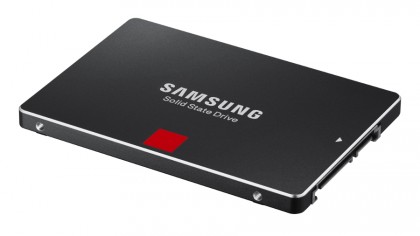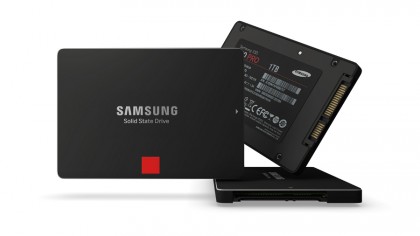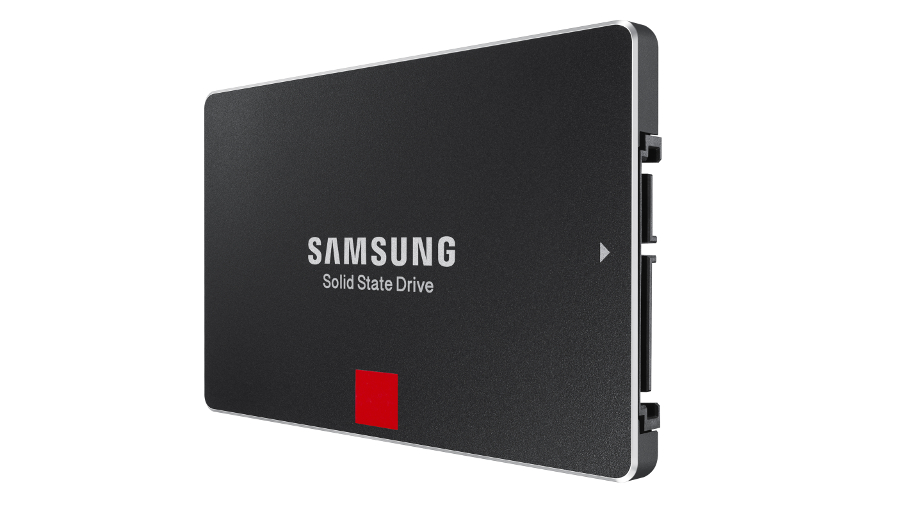TechRadar Verdict
The 850 Pro is a brilliant SSD and deserves an unequivocal recommendation. Anyone building a high-end PC should consider the 850 Pro as their SSD of choice. In professional media-editing environments in particular, which will involve vast amounts of data being written to the drive, the 850 Pro should last considerably longer than other drives on the market.
Pros
- +
High IOPS rating
- +
Superb overall performance
- +
Improved endurance
- +
Slick Magician software
- +
Ten-year warranty
Cons
- -
Not cheap
Why you can trust TechRadar
The 850 Pro is Samsung's new flagship consumer SSD, and the follow-up to the wildly popular 840 Pro, which was one of the best performing SSDs money could buy when it launched in September 2012. We're reviewing the 512GB model here which is priced at £232 (US$399, around AUD$420).
Apart from a small change from an orange logo to red, the 850 Pro's product packaging and the metallic shell of the drive look just like the older model. It has identical dimensions, including a height of 6.8mm, which ensures it will fit into the smallest of laptops, and a similar diamond-cut chamfered edge.
Likewise, the drive is still based on 2-bit MLC NAND flash memory. But under the hood, Samsung has introduced a few performance-boosting enhancements. The MEX controller has received a 100MHz speed bump, to 400MHz, but the headline new feature is 3D V-NAND flash memory, Samsung's proprietary 3D technology, where the memory chips are layered vertically, as well as horizontally.
As flash memory cells get smaller, SSD makers are encountering the same problems the semiconductor industry is facing. The cells are now tiny, down to the size of 1nm, and at this scale the laws of physics mean charge easily leaks between them, requiring new materials and insulation techniques to allow for continued improvements in performance and capacity. A 3D arrangement mitigates some of these problems.
It's probable the entire industry will eventually adopt 3D flash, but Samsung has beaten its competitors to market with a working product.
Samsung has its fingers in an exhaustive list of pies in the world of consumer electronics, selling retail-branded products that we're all familiar with, such as Galaxy phones and tablets, as well as many of the components other firms use in their own designs, including displays and flash memory chips. Samsung is the largest NAND producer in the world, with its own fabrication plant in Korea, which gives it a strong leg-up in the SSD business.

Not only does it design and build the hardware and software that goes into the SSD controller, but also the flash memory chips, unlike other storage companies that are forced to rely on third-parties for one or all of these aspects of their products.
This vertical approach means Samsung controls every aspect of its products, making it easier for the firm to introduce performance-boosting enhancements and custom technologies. And the 850 Pro is evidence that the company can bring these technologies to market sooner as well.
The 850 Pro represents the second generation of 3D V-NAND, as it debuted in enterprise SSDs, with 24 cells layered on top of each other. This time, Samsung has managed to layer 32 flash cells together.
Also worthy of note is that Samsung has added a 1TB option to its 850 Pro SSD line-up, which now includes 128GB, 256GB, 512GB and 1TB models. As with the 840 Pro, the drives are sold without any space reserved for over provisioning, a segment of the SSD that is usually reserved to improve longevity and performance. However, the user can implement this themselves using Samsung's Magician software.
The limitations of SATA
The main advantage of SSDs over mechanical hard disks is performance – but storage companies currently face a challenging problem. The SATA bus imposes a hard limit on the maximum possible sequential transfer rates. No matter how good the underlying technology, no SATA storage device can go faster than 6Gb/s. Even then, that's only a theoretical speed, and real-world performance is less.
The obvious answer is moving to a better, faster bus, and PCI-Express is the perfect candidate, since it significantly raises the bandwidth ceiling.
But this presents its own problems. Only desktop computers offer a standard way for users to add PCI-Express expansion cards, and there is no widely adopted standard on dimensions or connectors for laptops, which now command the lion's share of PC sales.

While Apple has been able to shift its entire Mac range to PCI-Express SSDs, since it has created its own proprietary connector, other firms don't have this luxury yet.
Life will become easier in the future with the introduction of the M.2 connector and NVM Express, a standard specification for PCI-Express SSDs in PCs that will replace AHCI and allow for much faster speeds.
But for now, the biggest market by far is with standard SATA storage devices, which is why Samsung has stuck to this standard with the 850 Pro. However, in terms of sequential transfer speeds, the 840 Pro was already approaching the limits of the SATA bus, so I wasn't expecting huge improvements with this aspect of performance in my tests.
